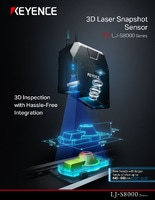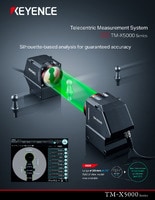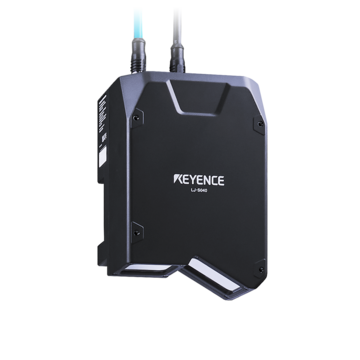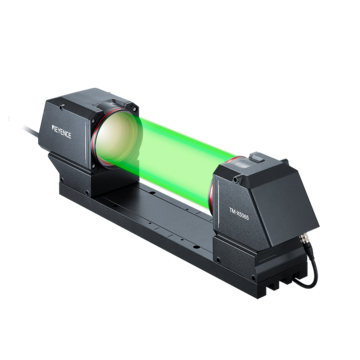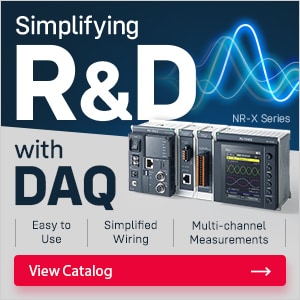Measurement Sensors
Dimension Measurement
Displacement Measurement
Enhance Casting Quality with Advanced Metal Part Inspection
Casting is a process where molten metal (metal that has been melted and is in a liquid state) is poured into a shaped mold. It has been developed over the years in order to meet today's manufacturing needs. Manufacturers still use casting today to create parts for cars, sculptures, and many other things.
The success of any casting project depends on factors like mold design, composition, and metal quality. While each component is vital for high-quality castings, inspection is paramount. Rigorous inspection ensures the final product meets specified standards and requirements.
This is where cast metal part inspection comes into play.
Get detailed information on our products by downloading our catalog.
View Catalog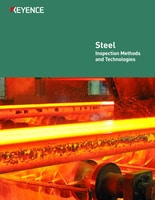

Overview of Cast Metal Part Inspection
In cast metal production, inspection is vital to ensure product quality and integrity. Two main methods for inspecting cast metal parts are destructive testing and non-destructive testing (NDT).
Destructive testing involves breaking a casting sample to evaluate its properties, such as strength and composition. Used mainly in design and development, it offers insights but is limited to small samples and is not suitable for final products.
Non-destructive testing (NDT) allows for casting quality inspection without damaging the casting. Foundry workers, clients, and technicians use it to assess internal and external integrity. It's crucial in the aerospace, automotive, and medical industries, where defects can have serious consequences.
Visual casting quality inspection and laser sensors are two examples of non-destructive testing. Visual inspection examines castings for surface defects, while laser sensors scan for irregularities in geometry and dimensions.
Importance of Quality Casting for Metal Manufacturing
High-quality casting is crucial in metal manufacturing because it affects costs, keeps customers happy, and keeps project timelines on track.
Poor-quality castings lead to higher scrap rates and rework, often due to the use of incorrect material, insufficient cooling, or poor mold design. These issues waste resources, increase costs, and disrupt production schedules, delaying delivery to customers.
Key Features of Metal Casting Inspection Systems
Metal casting is a widely used technique for producing intricate metal components. However, variations in quality can lead to defects in the final products. An essential step in metal casting is inspecting the mold before pouring molten metal. Non-contact laser displacement sensors are ideal for this task, as they accurately measure the mold's shape and dimensions efficiently.
After completing the casting process, measurement sensors are crucial for detecting defects or deviations from specifications in the final product. The KEYENCE 3D laser snapshot sensor excels in this, capturing a detailed 3D image of the entire casting in fractions of a second.
Besides standard dimensional measurements, KEYENCE's laser profiler systems gather height data to detect surface defects like scratches, pits, and dents on castings. This is important for the quality control of metal castings before further processing or assembly.
We’re here to provide you with more details.
Reach out today!

Metal Casting Inspection Methods
Like any manufacturing process, metal casting requires thorough inspection to ensure product quality. Common casting inspection methods include visual casting quality inspection, dimensional measurement, X-ray and ultrasonic testing.
Visual Inspection
Visual inspection can be done manually by an inspector or through automated vision systems with cameras to analyze images for flaws. While visual inspection effectively identifies surface issues, it is less capable of assessing a part's internal features.
Profile Measurement
Profile measurement is a non-contact method for assessing the dimensional accuracy and surface finish of metal castings. It uses laser scanners or structured light systems to capture point cloud data from the component's surface. Known for its precision and speed, profile measurement is ideal for in-line production casting quality inspection.
3D Snapshots
Like profile measurement, 3D snapshots use laser scanners or structured light systems to gather detailed 3D data of a part's surface. Rather than creating a continuous point cloud, this method takes "snapshots" from various angles and integrates them into a cohesive 3D model. It's especially useful for analyzing complex geometries and hard-to-access internal features.
X-Ray and Ultrasonic Testing
X-ray and ultrasonic testing are non-destructive techniques used to assess the internal structure of cast metal components. X-rays identify defects like porosity or inclusions, while ultrasonic waves detect cracks or voids.
Common Defects in Metal Castings
Producing high-quality metal castings involves addressing potential defects that may arise during the process. Here is a list of some common metal casting defects:
- Blowholes
- Pinholes
- Open Shrinkage Defects
- Closed Shrinkage Defects
- Open Holes
- Warping
- Misruns
- Hot Tears or Cracks
- Fusion
Enhance Metal Casting Inspection Quality with Advanced Measurement Sensors
With rising demand for precision and quality, traditional metal casting inspection methods are becoming insufficient. Traditionally, quality assurance for metal castings relied heavily on visual inspection using manual tools like calipers and micrometers.
KEYENCE's cutting-edge measurement sensors are designed for metal casting, offering ultra-fast, precise inspections. With imaging speeds of 0.2 seconds and 0.3 µm repeatability, these sensors revolutionize inspections with real-time, accurate data.
Looking to improve the quality and efficiency of your metal casting process? Contact us today to integrate KEYENCE's advanced measurement sensors into your cast metal part inspection.
Contact us to learn more about how our advanced technology can help take your business to the next level.
Contact Us
Related Products
Applications
Dimension Measurement
- Thickness and Width Measurement
- Step Height Measurement
- Inner and Outer Diameter Measurement
- Measuring Angles
- Meandering/Edge Measurement
Displacement Measurement
- Positioning and Stroke Length Measurement
- Vibration and Runout Measurement
- Deflection Measurement
- Measuring Eccentricity

